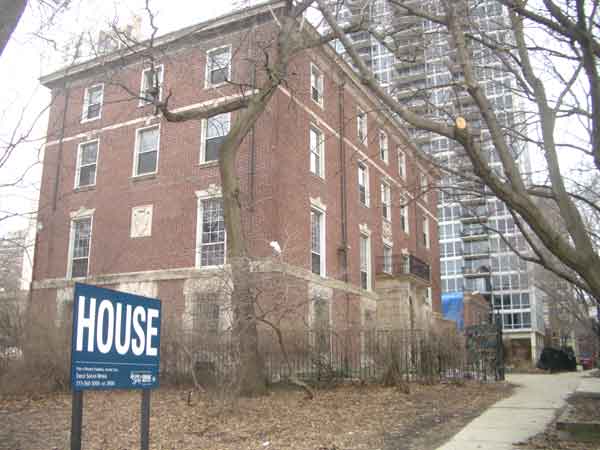
In May 2005, the managers and residents of AIDSCare, a Lake View hospice, were startled to learn that they had 90 days to move out of the dilapidated mansion and coach house they had shared with an order of nuns for a dozen years. The nuns were members of the Society of Helpers of the Holy Souls, which for six decades had occupied the 16,000-square-foot Meeker Mansion at 3030 North Lake Shore Drive. They had sold the buildings—the Georgian-style mansion, a coach house, a chapel-solarium, and an annex—as well as the 1.5-acre lot to LR Development Company for $21 million. At the time, LR announced plans for “a mix of luxury single-family residences, townhouses, and adaptive-reuse condominiums” on the site, which fronted Lincoln Park between Barry and Wellington avenues.
LR Development later became a part of Related, a national company based in New York. (Crain’s Chicago Business recently reported that Related Midwest, as LR Development is now known, was discussing a merger with another developer because of slow condo sales.) At some point after buying the Meeker property, LR/Related sold it in pieces to other owners. Almost three years after the initial sale to LR, the mansion, a brick and limestone structure built in 1913 for Arthur Meeker, the head of the Armour Meat Company, stands empty. Renovation of the coach house on the northwest corner of the parcel (on Barry) is almost complete, and a sign on a fence says the owner of the southeast corner of the property (on Wellington) has applied to the city to build a house there. The rest of the grounds, including a row of former garden plots, remain unused.
Last week, Emily Sachs Wong, the Koenig & Strey GMAC agent who for several months had been trying to sell the mansion as a single-family home priced at $4.5 million, told me that the owner (whom she would not identify) was going to take it off the market if it didn’t sell by Good Friday (March 21st). The plan, she said, was to install condos in the mansion. As Good Friday approached and I called with more questions, Wong did not respond.
Wong had tried an unusual tactic to get the house sold. She posted two small billboards outside that proclaimed in letters about two feet high: HOUSE. That should have made clear that the oversize brick structure with the pillared stone entry was available for the mansion set. With its grandly scaled rooms, the house, designed by Charles Platt, has the potential to be magnificent (as evidenced by photos that accompanied Wong’s Internet listing: www.ksgmac.com/06540706). Still, says Wong, “it’s going to take a lot of renovation.”
The neighborhood, now mostly mid-rises and townhouses, has a handful of houses that recall its days in the early 20th century as a mansion district; the 300 block of West Wellington was then known as Meatpackers Row, a tip of the hat to the ornate houses built there by Lester Armour and Oscar Mayer. And the location is matchless. About 75 yards to the east, Lake Shore Drive cuts this area off from the busier lakefront section of the park (although there is an underpass that allows pedestrians and cyclists to travel beneath the drive). It’s an enviable place to live in the city—but how long will it be until somebody actually gets to enjoy the place?


